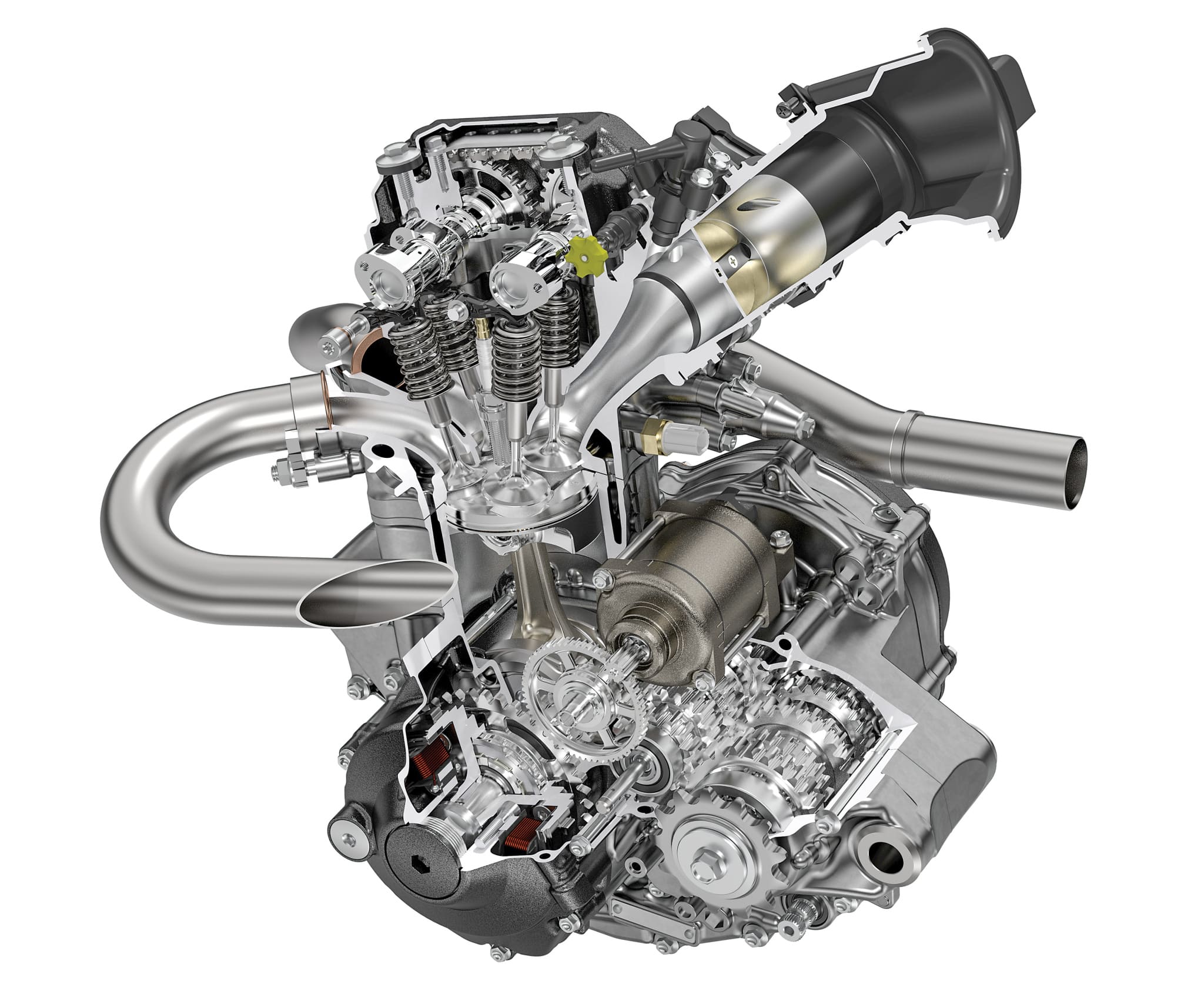ASK THE MXPERT: THE FOUR-STROKE FEAR FACTOR
There are more parts in a modern four-stroke engine than in a Swiss watch. Learning the symptoms of an ailing engine can help find problems before they become nightmares.
FOUR-STROKE FEAR FACTOR
Dear MXperts,
I live in mortal fear of my four-stroke blowing up. I read all the time about brand-new bikes that have broken their connecting rods, cracked a piston, had the auto compression lever fail and all sorts of other mechanical misery. I scraped and saved to buy a 2024 Yamaha YZ450F, and I can’t afford a $3000 repair bill. What can I do to catch problems before they ruin my day and my bank account?
It is a fact of life that engines used for racing are prone to breaking. When MXA’s Jody Weisel was a road racer, he used to say, “Task the mxperts, motocross, he only thing that I can afford to let break at 130 mph is the zipper on my leathers.” Every part is stressed and could fail if anything goes wrong. Always run clean oil in the engine, keep the radiators full, and run the highest octane gasoline available from the busiest local gas station. And, it goes without saying that you should check every bolt on your bike at regular intervals, especially your sprocket bolts, because a loose sprocket can break your rear hub, and a derailed chain can damage your engine cases. Here are 10 areas of concern.
One—Loss of engine torque: Compression is first to go on a worn-out engine. You will notice this from the saddle as a loss of bottom-end torque. The torque goes when the cranking pressure is lost. Ask yourself every time you ride, “Does the bike pull as hard as it used to up hills or in deep dirt?” As a rule of thumb, the first time it feels funny is the time to investigate.
Two—Compression check: There is a cheap and easy way to test engine compression. Use your human compression checker. Every time you kick-start your bike, note what normal compression resistance feels like when slowly kicking the engine over. As soon as you notice that the bike is easier to kick over, you need to assume that the engine has lost compression.
Three—Valve adjustment: The prime suspects in compression loss on a four-stroke are the valves. They could be out of adjustment. If the adjustment is too tight, the valves will hang open and leak compression. Readjust to the manufacturer’s spec and feel for improved low-speed kicking compression. Worn valves will wear out the valve seats in the cylinder head. You should pull your cylinder head every 20 hours to check for valve wear. What should you look for? Look for pitting, grooving on the valve (where it hits against the valve seat) and cupping on the valve seat itself.
Four—Strange sounds: Funny noises that you don’t remember hearing before deserve immediate attention. You might find that it’s something simple, but what if it isn’t?
Five—Oil consumption: A quick way to check engine health is to keep an eye on oil consumption. If you lose more than the difference from the “high” mark to the “low” mark in a day’s worth of riding, there is something wrong.
Six—Only bump-starts: If your bike won’t kickstart yet seems to run fine when bump-started, you have a problem. When pushed, the bike starts because engine speed provides enough cranking pressure to ignite the fuel/air mixture. If it won’t start with the kickstarter, it’s a sign of lost compression due to worn rings or loose valves.
Seven—Piston life: Four-stroke pistons are short. These high-revving engines load the piston with considerable side force. If the piston gets too sloppy, it will rock back and forth in the bore and break a skirt. Replace the piston and rings whenever the top end is serviced. The cost of the piston is cheap compared to the repair bill after the rod bursts through the cases.
Eight—Cam chain: If the cam-chain adjustment suddenly goes out of whack, you have a problem. Most chain tensioners are made of plastic, and they can melt if the engine overheats. If an engine is hot enough to melt the cam-chain adjuster pad, the heat probably did damage elsewhere in the engine.
Nine—Hour meter: It’s not a matter of if your four-stroke will blow but when. With proper service, your four-stroke can easily last three years—or 100 hours, whichever comes first. The key is regular maintenance. Consistently pull the top end down to measure what your rate of wear is. Personalize a maintenance baseline based on your own rate of wear.
Ten—Heat: The biggest danger for any engine (car, boat or motorcycle) is getting over heated.There are lots of ways to keep you engine cool including high pressure radiator caps, Boyesen Super Cooler water pumps, after market radiators and anti-freeze, but most important is the simple task of checking the water level.







Comments are closed.